Text: Minttu Heimovala
Comics 101 was a five week short course organized by the Comics Center in Helsinki (Sarjakuvakeskus). Not that long ago I got interested in making comics and had no previous experience, apart from reading comics. So when a basics course was announced, I was eager to take part.
On the first evening, a group of 14 students plus the teacher, Kaisa “Kitty” Leino met in Kallio. I talked to Kitty about her comics background and her history as a teacher. Kitty has worked as a freelance journalist and today she works as a content coordinator at a content strategy agency. Her passions are superhero and autobiographical comics. She has taught the Comics 101 in Finland as well as in Alaska. Kitty actually came up with the concept of the course during two summers she spent in Alaska as a research assistant for a Finnish eider researcher. At some point her boss found out she makes comics and the idea for the course was born. After a successful first course in Alaska, she later pitched the idea to the Comics Center and started teaching the course there as well.
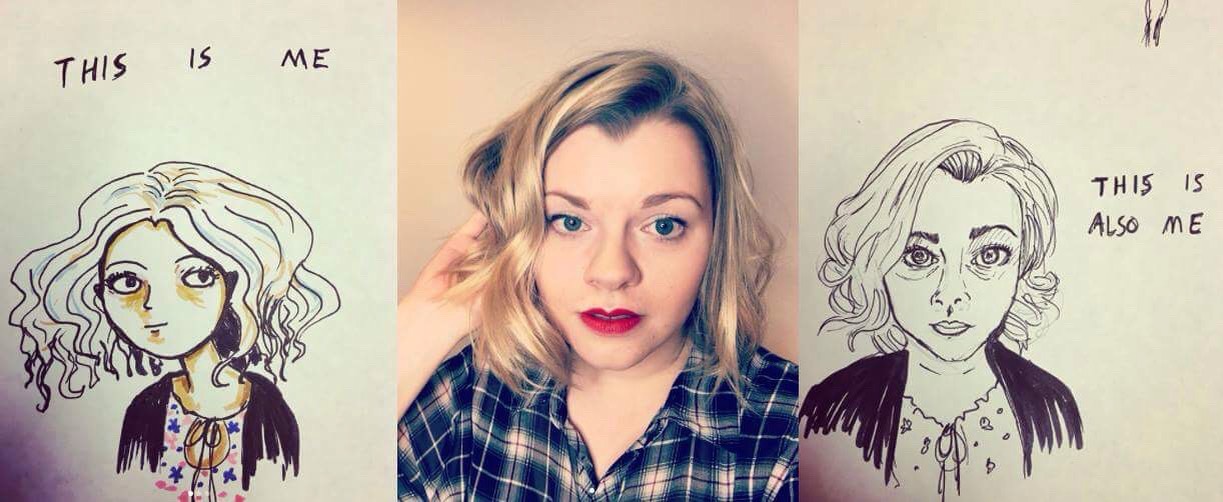
Image: Kaisa Kitty Leino
The basic concept of the course, according to Kitty, is doing, rather than learning theory. After teaching the course several times, she has noticed that just jumping head-first into drawing comics is better than teaching a lot of theory. Although there is some basic theory of comic-making included in the course, the emphasis is strongly on the many drawing exercises. We started every meeting with a short drawing exercise.
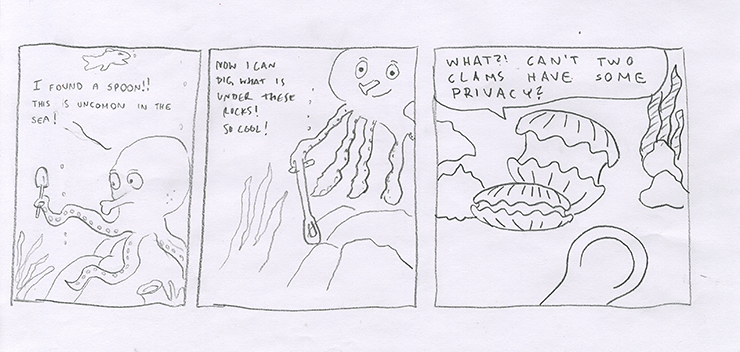
During one of the short exercises we made a comic together. Each of us filled one panel and gave the paper forward to another person. Random word clusters worked as an inspiration for our comic strips and they varied from “Happy Potter and an afro” to “an octopus and a spoon”.
After the short exercises we talked about one theoretical concept behind comics, such as different types of comics and the purposes of different comics. During the last hour, it was time for the actual, longer drawing exercise, that was always tied to the theory that we had just learned. Exercises included drawing a miniature zine, making a comic about something that happened to us during the week, transferring a written piece of news into a comic and so forth. The amount of exercises was good, since we had enough time to finish everything during the course.
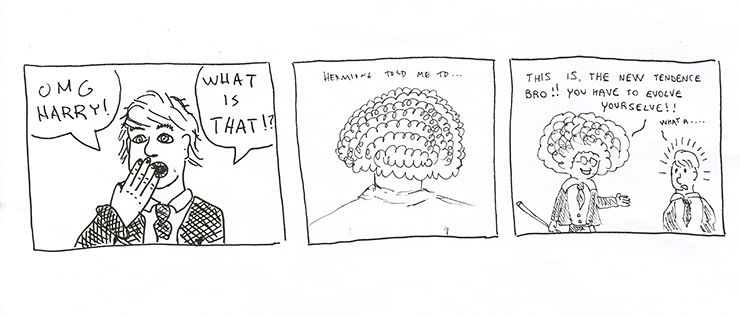
What did I get out of this course? Well, I made many international friends during the five weeks and learned a lot of the basics of making comics. It’s a great kick-start for a new hobby. Also seeing others just create made me less strict about my own drawing skills (or the lack of them). I’d definitely recommend the course to anyone interested in comics and it really doesn’t matter if you think you can’t draw.
I talked to Kitty about this and she strongly thinks that comics are a good hobby for anyone, whether they hated art classes in school or love drawing: “Comics are so much more than just whether you can draw like Jim Lee, they’re about story-telling, your personal point of view and creating. Plus, even if you never want to publish anything, comics are an amazing creative outlet for your thoughts. We should also remember that comics are not a genre, but an art medium – if you can draw a stick figure and a speech bubble, you’re good to go. During my classes I want to encourage people to create and to have fun, and not to worry so much about “talent”.”
And we all have to start somewhere, right?
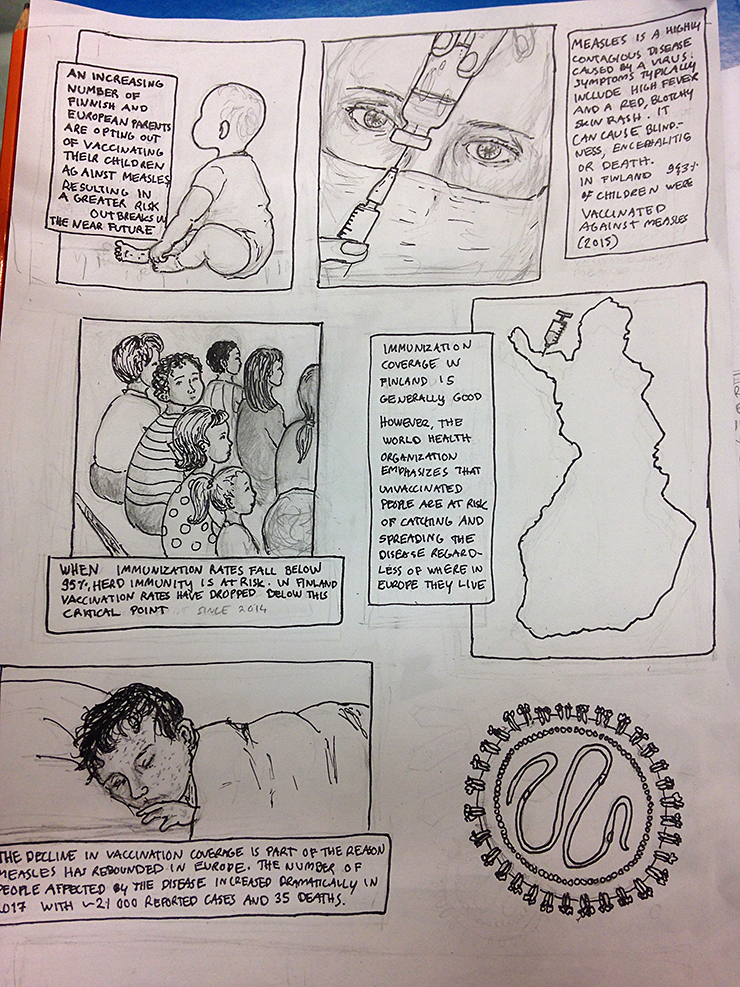
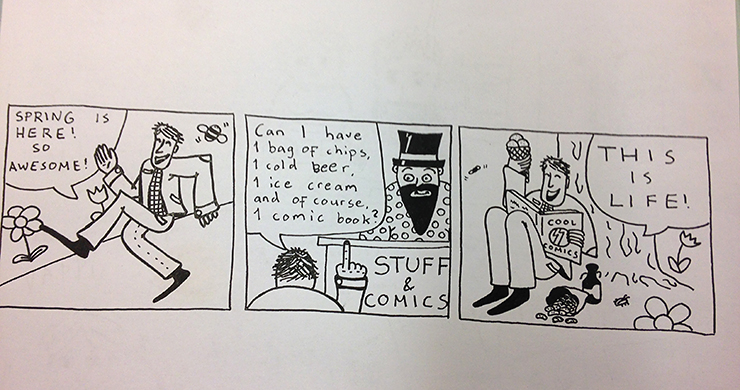
Comics Center courses here: http://sarjakuvakeskus.fi/kurssit.. Autumn courses TBA soon!
